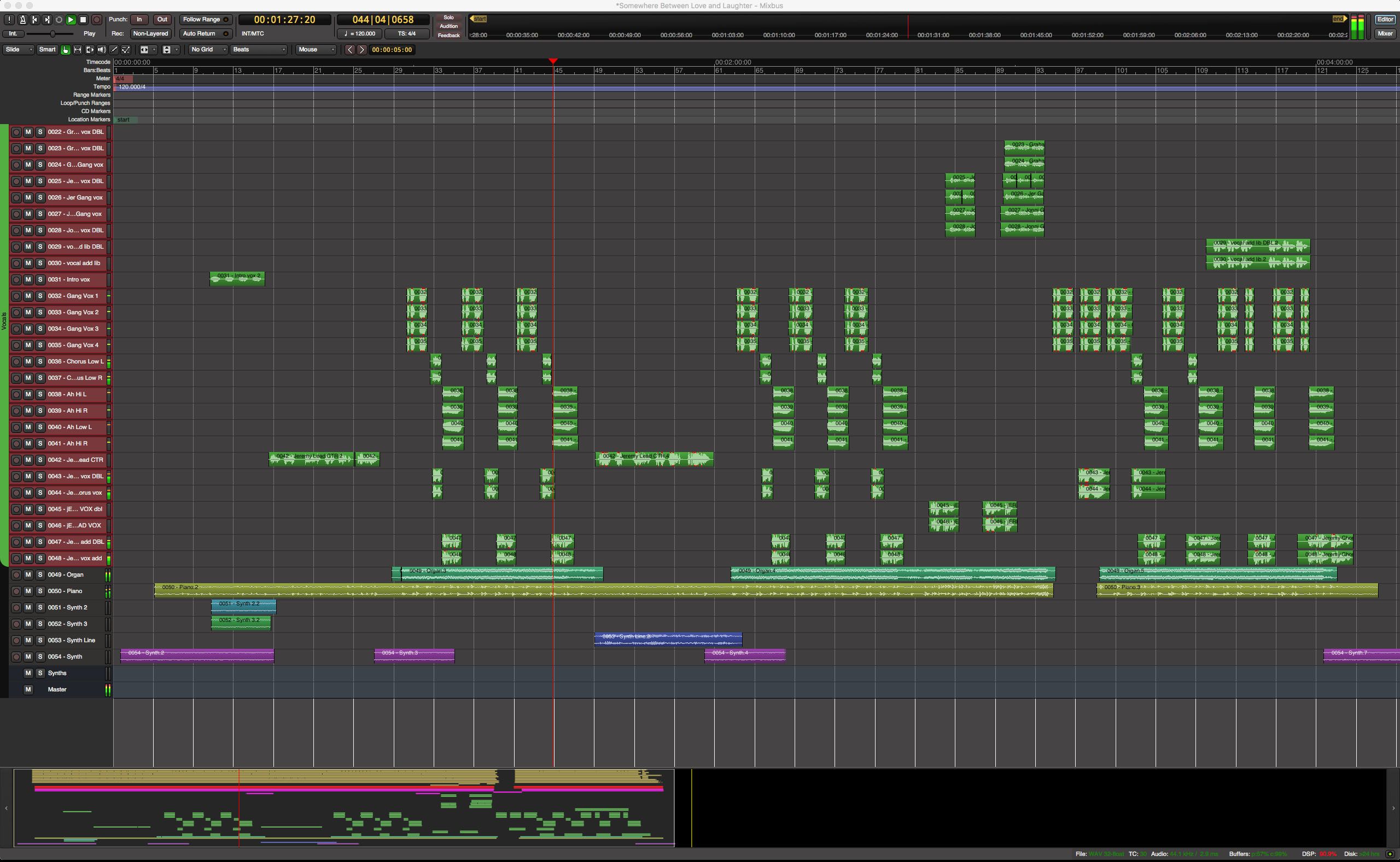


- #MIXBUS 4 PANNING CHANNELS MAC OS X#
- #MIXBUS 4 PANNING CHANNELS INSTALL#
- #MIXBUS 4 PANNING CHANNELS PRO#
All those controls are ever-present there's no need to hunt for and install plug-ins and control panels. The low end was obviously thicker, and the soundstage seemed less cluttered in the mid and high frequencies.Įvery audio channel has classic Harrison 3-band sweepable EQ controls, as well as a dynamic processor with Leveler, Compressor, and Limiter modes with corresponding gain reduction meters. After I imported my first session and pressed play, I instantly heard some pleasant sonic differences. But that's not the case with Mixbus because the analog spirit of the Mixer is always working. In other words, there's no sonic difference when you listen to tracks imported from one DAW into another, provided all faders and other controls are at their default, zero, or off positions. Most popular DAWs don't have a 'sound,' per se.
#MIXBUS 4 PANNING CHANNELS PRO#
Version 4 also has the capability (currently included in beta form) of importing PTX and PTF sessions from Pro Tools. Recording into Mixbus is simple, and new adopters will get the hang of that quickly. In that case, importing the audio (19 supported formats) and MIDI tracks is easy, though you may want to render all the virtual instruments to audio tracks to keep you from working to recreate all those plug-ins and settings after the import. Many users record in their current DAW first because their existing recording workflow is familiar. There are two ways to get tracks into Mixbus: recording or importing. While there are audio, instrument and MIDI plug-ins included, you can also use 3rd party offerings in VST, UA, and LV2 formats, as well as the XT-series of Harrison plug-ins you can purchase individually, in bundles, or in a $9.00-per-month Plugged-In Membership. You'll get unlimited audio, MIDI and instrument tracks, and up to eight buses for signal routing and effect returns. Both 32- and 64-bit OS and CPU architectures are supported, which means you can use Mixbus on older computers with at least two or more CPU cores. (That's right: Linux.) I tested Mixbus on my 12-core Mac Pro running Sierra, but the idea of switching to a Linux-based system is intriguing, especially given the uncertainty of Apple's roadmap for pro machines.
#MIXBUS 4 PANNING CHANNELS MAC OS X#
Mixbus 4 is a fully featured DAW (including MIDI tracks) that runs on Mac OS X 10.6.8 or newer, Windows XP or newer, and Linux kernel 2.6 or newer. Can they be serious? Did they hit their collective head? Let's find out. The company has made the bold statement that you can get the Harrison sound in Mixbus for a mere $79.00.

(I'll bet the majority of you haven't, either.) But I've sure listened to a lot of artists (Electric Light Orchestra, Genesis, Michael Jackson, Kansas, etc) whose award-winning mixes have flowed through Harrisons, which have earned a reputation for sound quality and flexibility. Truth be known, I've never mixed on a Harrison console. While all current DAWs have a lot to offer, Harrison's MixBus 4 may have you re-embrace the concept of buying gear based on the sound characteristics rather than whiz-bang alone. For example, if you wanted a Studer deck and a Harrison 32C console, you could go and purchase that exact combo (provided you had deep pockets.) But the modern DAW paradigm has combined the recorder and mixer into one branded product.

In the era of the analog studio, purchasing recording equipment was done á la carte.


 0 kommentar(er)
0 kommentar(er)
